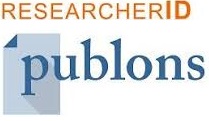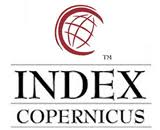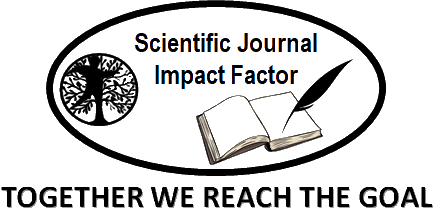Validity and Practicality of Flipped Classroom Learning System Based on Structure Inquiry using LMS Moodle on Chemical Bonding for Phase F High School
Abstract
Keywords
Full Text:
PDFReferences
Gultom, F. K., Haryati, S., S, L. A., Studi, P., Kimia, P., Keguruan, F., Universitas, P., & Km, K. B. (2022). Jurnal Pendidikan Kimia Universitas Riau PENGEMBANGAN MAJALAH KIMIA ELEKTRONIK E-CHEMAGZ KIMIA. 7(2), 74–87G. Eason, B. Noble, and I.N. Sneddon, “On certain integrals of Lipschitz-Hankel type involving products of Bessel functions,” Phil. Trans. Roy. Soc. London, vol. A247, pp. 529-551, April 1955. (references)
Li, W. S. S., & Arshad, M. Y. (2014). Application of multiple representation levels in redox reactions among tenth grade chemistry teachers. Journal of Turkish Science Education, 11 (3), 35–52. https://doi.org/10.12973/tused.10117a
Waer, W. P., & Mawardi, M. (2021). Integrasi Model Inkuiri Terbimbing Dan Pendekatan Flipped Classroom Pada Pembelajaran Materi Sifat Koligatif Larutan Untuk Waer, W. P., & Mawardi, M. (2021). Integrasi Model Inkuiri Terbimbing Dan Pendekatan Flipped Classroom Pada Pembelajaran Materi Sifat Koligatif Larutan Untuk Siswa Kelas XII SMA/MA. Edukatif : Jurnal Ilmu Pendidikan, 3 (3), 1029–1037. https://edukatif.org/ index.php/edukatif/article/view/498
Syakdiyah, H., Wibawa, B., & Syahrial, Z. (2020). Flipped Classroom Learning Innovation as an Attempt to Strengthen Competence and Competitiveness of Students in the 4.0 Industrial Revolution Era. Formatif: Jurnal Ilmiah Pendidikan MIPA, 9 (4), 267–280.
Rafiqah, & Ali Umar Dani. (2021). Pengembangan Model Pembelajaran Flipped Learning Berbasis Inkuiri Dalam Mata Kuliah Fisika Dasar. Jurnal Pendidikan Fisika, 9 (1), 43–68. http://journal.uin-alauddin.ac.id/indeks.php/PendidikanFisika
Sagita, R., Azra, F., & Azhar, M. (2017). Pengembangan Modul Konsep Mol Berbasis Inkuiri Terstruktur Dengan Penekanan Pada Interkoneksi Tiga Level Representasi Kimia Untuk Kelas X Sma. Jurnal Eksakta Pendidikan (Jep), 1 (2), 25. https://doi.org/10.24036/jep.v1i2.48
Wilar, G. J., & Gugule, S. (2016). Pembelajaran Multipel Representasi Disertai Praktikum Pada Materi Ikatan Kimia. Indochembull.Com, 1 (1), 59–62. https://doi.org/10.37033/ojce.v3i2.276
Zion, M., & Mendelovici, R. (2012). Moving from structured to open inquiry: Challenges and limits. Science Education International, 23(4), 383–399
Bell, R., Smetana, L., & Binns, I. (2005). Simplifying inquiry instruction. The Science Teacher, October (October), 30–33.
Azura, S., & Copriady, J. (2017). Identification Misconception on Chemical Bonding Using Three Tier Diagnostic Test at Students in X MIA Class Senior High School 8 Pekanbaru. Jurnal Online Mahasiswa (JOM) Bidang Keguruan dan Ilmu Pendidikan, 4(2). Retrieved from https://jom.unri.ac.id/index.php/JOMFKIP/arti cle/view/15470
Widarti, H. R., Safitri, A. F., & Sukarianingsih, D. (2018). Identifikasi Pemahaman Konsep Ikatan Kimia. J PEK (Jurnal Pembelajaran Kimia), 3(1), 41–50. https://doi.org/10.17977/um026v3i12018p041
Openhotman, O., Isa, M., & isa, I. (2017). Analisis Pemahaman Siswa pada Konsep Ikatan Kimia Menggunakan Tes Paralel. Jurnal Entropi, 12(2), 149–155. Retrieved from https://media.neliti.com/media/publications/27 7419-analisis-pemahaman-siswa-pada-konsep ika-be9c126c.pdf
Muderawan, I. W., Wiratma, I. G. L., & Nabila, M. Z. (2019). Analisis Faktor-Faktor Penyebab Kesulitan Belajar Siswa Pada Materi Kelarutan Dan Hasil Kali Kelarutan. Jurnal Pendidikan Kimia Indonesia, 3(1), 17. https://doi.org/10.23887/jpk.v3i1.20944
Hasanah, D., ., W., Mulyani, S., & Widhiyanti, T. (2024). Multiple Representations Analysis of Chemical Bonding Concepts in General Chemistry Books. KnE Social Sciences, 9(8), 248–257. https://doi.org/10.18502/kss.v9i8.15554
Ni Made Ary Suparwati. (2022). Analisis Reduksi Miskonsepsi Kimia dengan Pendekatan Multi Level Representasi: Systematic Literature Review. Jurnal Pendidikan Mipa, 12 (2), 341–348. https://doi.org/10.37630/jpm.v12i2.591
N H S Simanullang and J Rajagukguk 2020 J. Phys.: Conf. Ser. 1462 012067
Jebari K, Boussedra F and Ettouhami A 2017 Teaching Information Systems Management With Moodle, Ijet Paper 12 : 4-16
Bentley, T. (2012). Learning beyond the classroom: Education for a changing world. Routledge.
Hidayat, A., & Ningsih, T. (2022). Flipped Classroom Model Pembelajaran Era New Normal. Sang Pencerah: Jurnal Ilmiah Universitas Muhammadiyah Buton, 8(3), 649–660. https://doi.org/10.35326/pencerah.v8i3.2210
Aiken LR. Three coefficients for analyzing the reliability and validity of ratings, Educational and Psychological Measurument. J Artic Reports - Res Numer Data. 1985;45(1):131–42.
Riduwan. Measurement Scale of Research Variables. Bandung: Alfabeta; 2009.
Ozdamli, F., & Asiksoy, G. (2016). Flipped classroom approach. World Journal on Educational Technology: Current Issues, 8(2), 98–105.
Sigalingging, R. F., & Budiningsih, C. A. (2022). Flipped Classroom Learning Model to Increase Learning Passion at the Demangan State Elementary School. 363–368
Salim, K. & Tiawa D.H. (2015). Implementation of Structured Inquiry Based Model Learning Toward Students’ Understanding of Geometry. International Journal of Research in Education and Science (IJRES), 1(1), 75-83.
Plomp & Nieveen. (2013). Educational Design Research. Educational Design Research, 11– 50.
Rochmad. (2012). Desain Model Pengembangan Perangkat Pembelajaran Matematika. Kreano : Jurnal Matematika Kreatif-Inovatif.
Departemen Pendidikan Nasional. (2008). Panduan Pengembangan Bahan Ajar. Direktorat Jenderal Manajemen Pendidikan Dasar dan Menengah, Direktorat Pembinaan Sekolah Menengah Atas.
Daryanto, D & Dwicahyono, A. (2014). Pengembangan Perangkat Pembelajaran (Silabus, Pembelajaran, PHB, Bahan Ajar). Gava Media
DOI: http://dx.doi.org/10.52155/ijpsat.v47.1.6693
Refbacks
- There are currently no refbacks.
Copyright (c) 2024 Putri Alifiya, Minda Azhar

This work is licensed under a Creative Commons Attribution 4.0 International License.



















